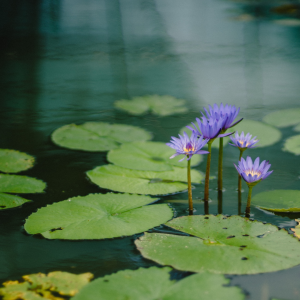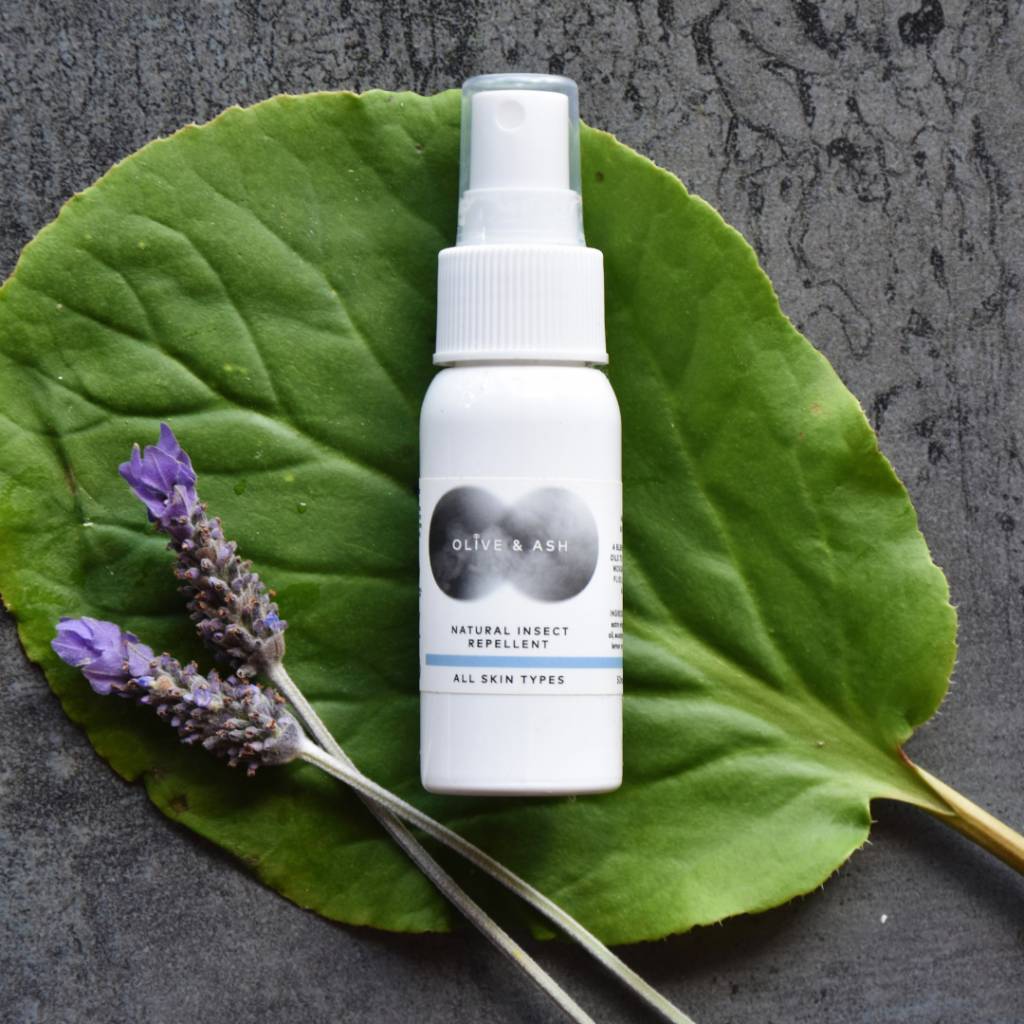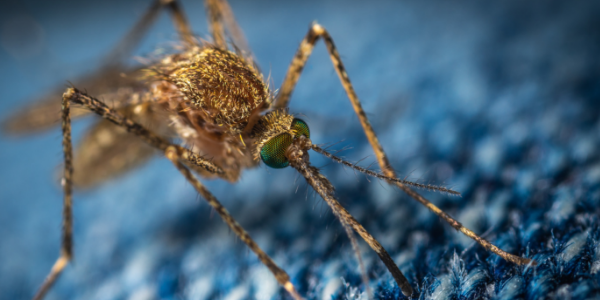It’s possible you’ve never thought twice about spraying yourself with an insect repellent full of chemicals. All you want to do is enjoy the BBQ or camping trip without being eating alive by mozzies! In this post, we’ll look at the danger of common chemicals in commercial repellant and why choosing natural, effective ingredients is a safer option for you and your family.
DEET
DEETs s tongue twisting scientific name is N,N-Diethyl-meta-toluamide. It’s a liquid chemical that was created by the USDA chemists in the 1940s for use by the U.S. military in jungle warfare to keep mosquito, fleas and ticks from biting the skin. Now DEET is a commonplace chemical in most commercial, insect repellants.
Reports have shown that topical use of DEET can cause allergic skin reactions, blisters and eye irritation, especially at concentrations of 50% and above. It also has a history of causing seizures or encephalopathic symptoms in some people.
(Encephalopathy is a general term describing a disease that affects the function or structure of your brain)
These case studies show young children are particularly susceptible to the harmful effects of DEET. Of medical issues reported with DEET, most patients were kids under the age of 8 and symptoms included headaches, seizures, involuntary movements, and convulsions.
Marketers and manufacturers who insist the chemical is safe say the number of cases of those adversely affected by DEET is too small to worry about. As a parent, wouldn’t you say ANY chance of your child having a potentially life-threatening health reaction to an everyday product is completely unacceptable?
On the ingredients label, DEET may also be listed as its scientific name N, N-Diethyl-m-toluamide or N, N-Diethyl-3-Methyl benzamide.
Picaridin
Compared to DEET, Picaridin (pronounced pih-CARE-a-den) is relatively new on the market.
It’s a synthetic compound created by Bayer in the 1980s and is now a common alternative to DEET in commercial repellents. You may find it listed in the ingredients as KBR 3023, Bayrepel, or icaridin and some people will experience skin irritation when exposed to picaridin.
This product has been tested on rats and rabbits, but there is no information available on long-term exposure to picaridin in people. Without knowing what this chemical is capable of long-term, I certainly wouldn’t feel comfortable applying it to my skin.

The environmental impact of chemicals in insect repellent
It’s not just us humans we need to think about. These chemicals have an impact on our environment too. DEET is an environmental contaminant, studies have found it to be present in drinking water and the U.S. EPA regards DEET as “slightly toxic” to birds, fish, and aquatic invertebrates. Even ‘slight toxicity’ can pose long term damage to delicate ecosystems!
Then there’s picardin. According to the National Pesticides Centre:
“Picaridin is moderately toxic to fish. It may build up in the tissues of some fish. Green algae grown in water with picaridin did not grow as well as algae grown in water without picaridin.”
What are natural alternatives for insect repellant?
So, how to keep the mozzies and bugs away naturally? Luckily, there are a few completely natural options that are safer and healthier than smothering your family head to toe in commercial insect repellant.
Lemongrass essential oil
This incredible essential oil has a fresh, invigorating, lemony and uplifting aroma. It can be used to treat a range of issues from muscular aches and pains to mental exhaustion and acne.
It also makes a wonderfully effective, natural insect repellent!
Lemongrass essential oil is extracted through the process of steam distillation of dried lemongrass. Even though most of us humans find the smell of lemongrass lovely, studies have shown bugs don’t feel the same! Lemongrass is closely related to citronella — another popular natural bug repellent often used in candles intended for outdoor use.
Lemon Myrtle
There are some incredibly powerful insect repelling, infection-fighting native plants here in Australia. Lemon Myrtle (Backhousia Citriodora) is one of them.
Its foliage is full of oil which has the highest amount of citral (>90%) of any plant known in the world which makes it a potent insect repellant. Lemon Myrtle is also calmative, antiseptic and antifungal.

Canola Oil
You may be surprised to know Canola oil is a wonderful natural insecticide.
Canola comes from the Rapeseed plant, which member of the mustard family. The main way the oils kill insects is by suffocation. The oils blocks their airways and reduces the availability of oxygen.
Lemon Eucalyptus oil
Lemon Eucalyptus oil can keep those blood-sucking bugs at bay. This essential oil is created by steam distilling the dried leaves and twigs of the lemon eucalyptus tree. The oil has a high amount of citronella and can keep many crawling and flying pests – cockroaches, ants and mozzies away due to high citronella content.
Lavender essential oil
We all know lavender essential oil has an incredible scent. What many people aren’t aware of is the oil can help prevent mosquitos biting; it’s insecticidal, antiseptic and calming. It also prevents the spread of bite infection and controls itching. A great natural insect repellent option for those with more sensitive skin.
Pine Oil
Pine oil doesn’t just smell amazing. Research has shown it can do an excellent job of deterring mosquitoes thanks to the active ingredient isolongifolenone found in the oil that repels insects.

Our Natural Insect Repellent keeps mosquitoes, sand flies, black flies and midges away.
We’ve included all of the above ingredients in our Olive & Ash Natural Insect Repellent. When blended together in our formulation, they form an effective and potent natural repellent. This repellant doesn’t just target mosquitos, it’s effective for midges, sandflies and black flies too.
Catnip essential oil
Catnip essential oil repels the mozzies, it even does a better job than DEET (about ten times better!) according to research and can repel for up to 2 hours.
When the catnip plant is bruised, it releases nepetalactone, an essential oil. We’ll be adding catnip to our Natural Insect Repellent, we’ve got some heirloom catnip growing and can’t wait to add it to our Natural Insect Repellent formulation!
Finally….
There are a few other simple ways to avoid bug bites aside from using insect repellent. Get rid of any stagnant water sources around your home (clogged gutters, birdbaths etc) as these are breeding grounds for mozzies.
Wear light, long sleeves and pants if you’re out at bug biting happy hour (dusk!) and avoid ticks by staying in the centre of walking trails and paths not brushing against the grass.
I hope this article has outlined some of safe, effective, natural ways to ward off the mozzies, bugs and know that synthetic chemicals are not the only solution.
Enjoy your time outdoors!
Deb x

Add Comment